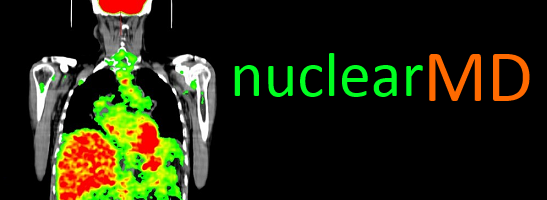Wellens Sign and Stress Testing
This case was compiled by Joseph Vollink PA, MEDVAMC
A 60 yrs old african american male with PMH of HTN, hypercholesterolemia, smoking (1 PPD x 40 yrs, quit about 5 months ago secondary to episodes of chest pain), family history significant for father with CAD and death from cardiac event at age 67, presented with chest pain. He was admitted to the hospital 4 months ago and was recommended to undergo MPI with stress testing.
Before starting the stress test, baseline HR was 65 bpm, BP was 145/76, baseline EKG showed NSR, normal axis, LAD, QTC 433 ms, and biphasic T waves in lead V2, as well as inverted T waves in leads V3 – V5. The EKG changes noted at the time of stress testing, as well as at hospital discharge, were consistent with Wellens syndrome, which suggests significant proximal LAD disease.



At peak dipyridamole stress (55.7 mg administered IV over 4 min), HR was 85, BP was 131/75. Patient reported mild (3/10) chest tightness and EKG showed >1 mm downsloping ST depression in the anterior leads. These resolved after the administration of 100 mg Aminophylline IV, during the recovery



The SPECT myocardial perfusion images at rest and stress showed a large, moderately severe, reversible distal anterior, anteroseptal, and apical perfusion defect suggestive of dipyridamole induced myocardial ischemia. Mild transient ischemia dilation of the left ventricle was noted with EDV = 170cc. The gated images showed normal left ventricular wall motion with an ejection fraction of 55%. Given the constellation of symtoms, EKG changes during stress testing at low double product, imaging findings, and resting EKG findings suggestive of proximal LAD disease, he was taken to the ER for admission and cardiology evaluation. Pt was taken to cardiac cath lab, where he was found to have a very tight 99% obstruction in the proximal LAD, as well as a 50% circumflex lesion. Cardiothoracic surgery was consulted, and patient underwent CABG.
Wellens syndrome is a constellation of clinical and EKG findings strongly suggestive of proximal LAD disease. Wellens syndrome was originally described by Wellens in his 1982 paper with DeZwaan and Bar(1).
The criteria for Wellens syndrome are(2):
1) Biphasic and/or inverted T waves in leads V2, V3, with similar changes occasionally in leads V1, V4, V5, V6.
2) No /minimal elevation of cardiac troponin.
3) No/minimal ST elevation.
4) No loss of R wave progression.
5) No Q wave.
6) Hx of CP/angina.
Patients with Wellens syndrome are at high risk of significant anterior MI and extensive myocardial damage and/or death. There are two basic types described, according to the EKG pattern noted: (findings of both types may be present simultaneously as well)
1) Type 1, with primarily the biphasic T wave pattern.
2) Type 2, with the deeply inverted T wave pattern.
Current AHA/ACCF/HRS recommendations for the standardization and interpretation of the EKG(3) state that the specific EKG pattern (type 2) consistent with Wellens syndrome should be interpreted as consistent with severe stenosis of the proximal LAD ( and/or recent hemorrhagic CVA).
Early revascularization is recommended in patients presenting with Wellens syndrome, as the they have poor prognosis with medical therapy alone(4). Exercise/Dobutamine stress testing is not NOT recommended, as there is significant risk of a cardiac event, and possibly death, with the significant stress load on the heart and a significant proximal LAD lesion present.(5, 6) If dipyridamole stress testing is considered, it should be done very cautiously; contrary to what many physicians believe, dipyridamole can also actually induce ischemia in the presence of coronary stenosis (7,8,9) , with an increase in the double product, ST segment changes, and chest pain, as was seen in this patient; a low threshold should be present for test termination if the patient exhibits significant chest pain or has significant ST changes in multiple leads.
The findings of Wellens syndrome on EKG before a stress test should alert clinicians to the strong possibility of a significant proximal LAD lesion; stress testing, if done at all, should only be done cautiously with dipyridamole, with a low threshold for early test termination should signs or symptoms of significant ischemia present themselves; strong consideration should be given to proceed directly with cardiac catheterization with pt’s presenting with the Wellens syndrome, rather then stress testing of any kind.
1) DeZwaan et al Am Heart J 1989; 117: 657-65
2) Tatli et al Cardiology J 2009; 16: 73-75
3) Wagner et al JACC 2009; 53, 11: 1003-11
4) Nisbet et a l J Emergency Med 2008; 20, 10: 1-4
5) Rhinehardt et al AM J Emerg Med 2002; 20(7): 638-43
6) Tandy et al Ann Emerg Med 1999; 33: 347-351
7) Picano et al Amer Heart J 1989; 118: 314-319
8) Lucarini et al Chest 1992: 102; 444-47
9) Picano et al Circulation 1991; 83(suppl III): III-19 – III-26
